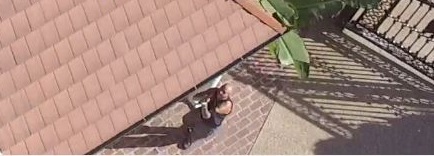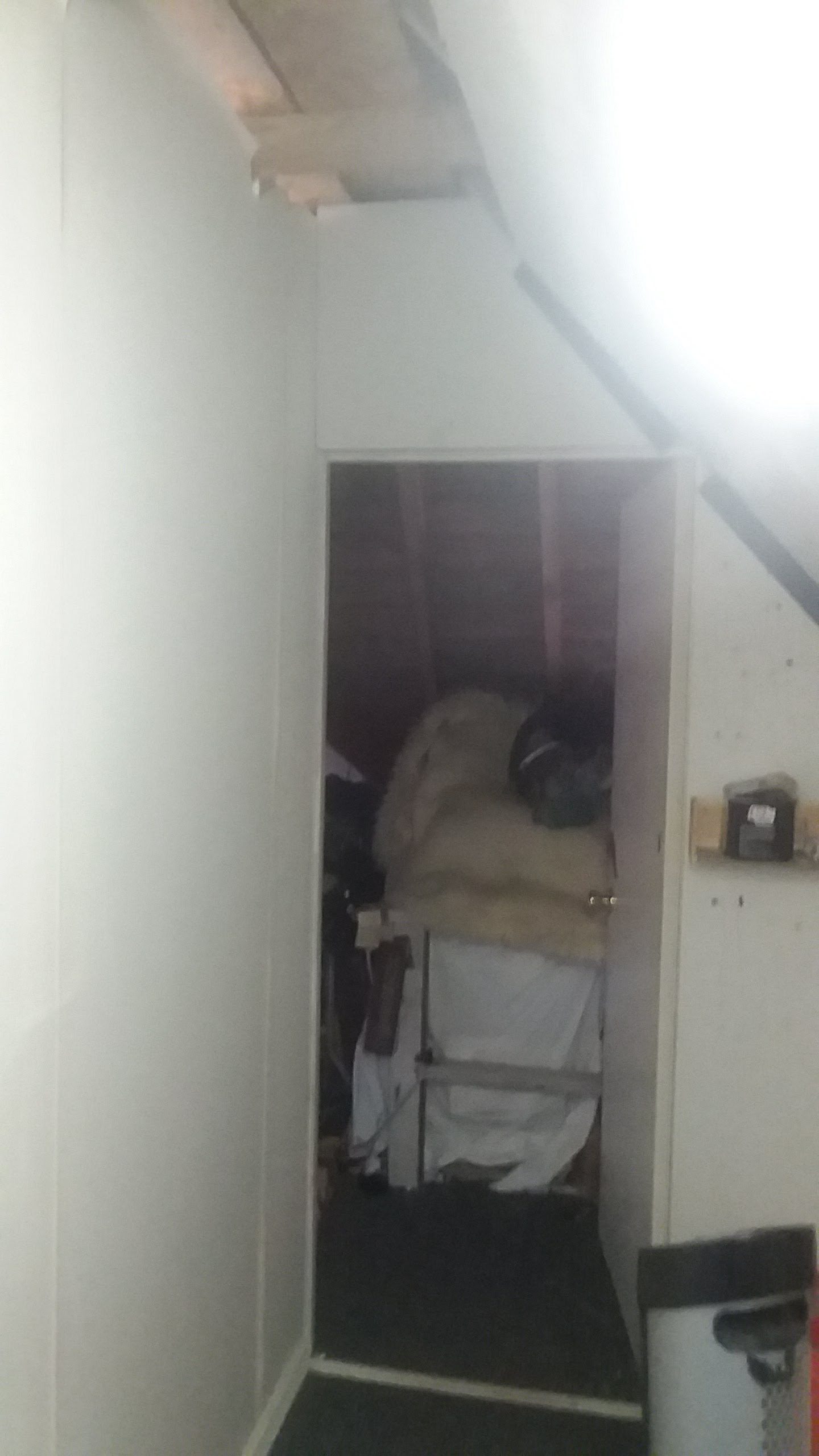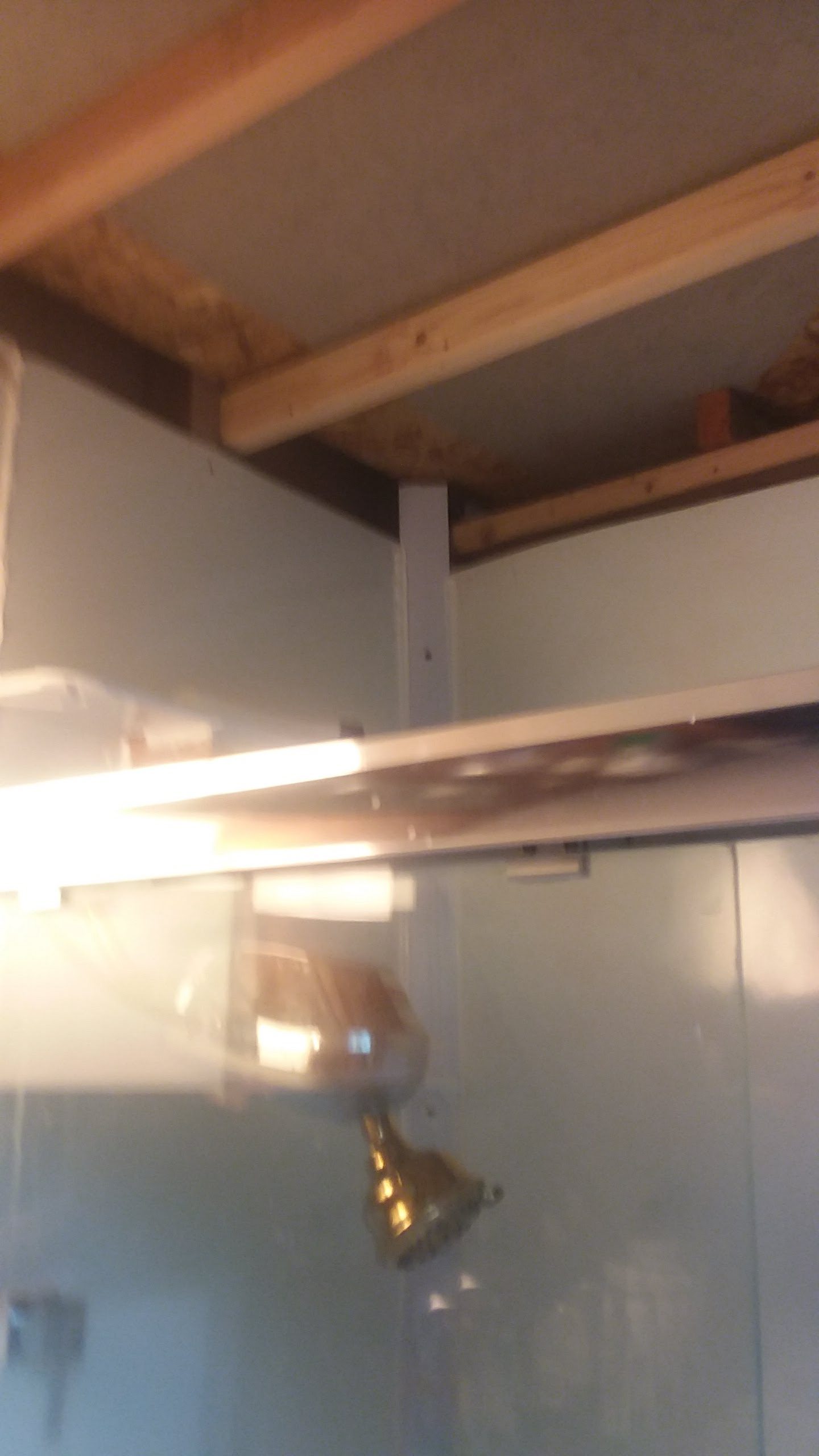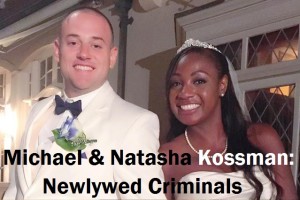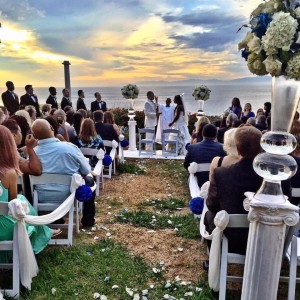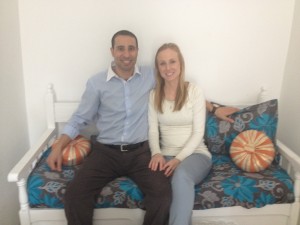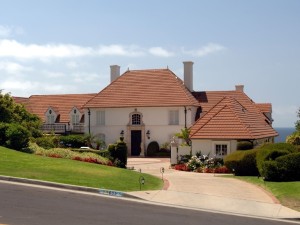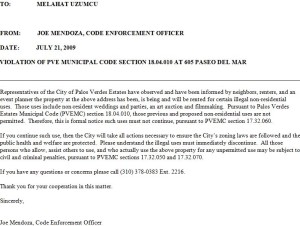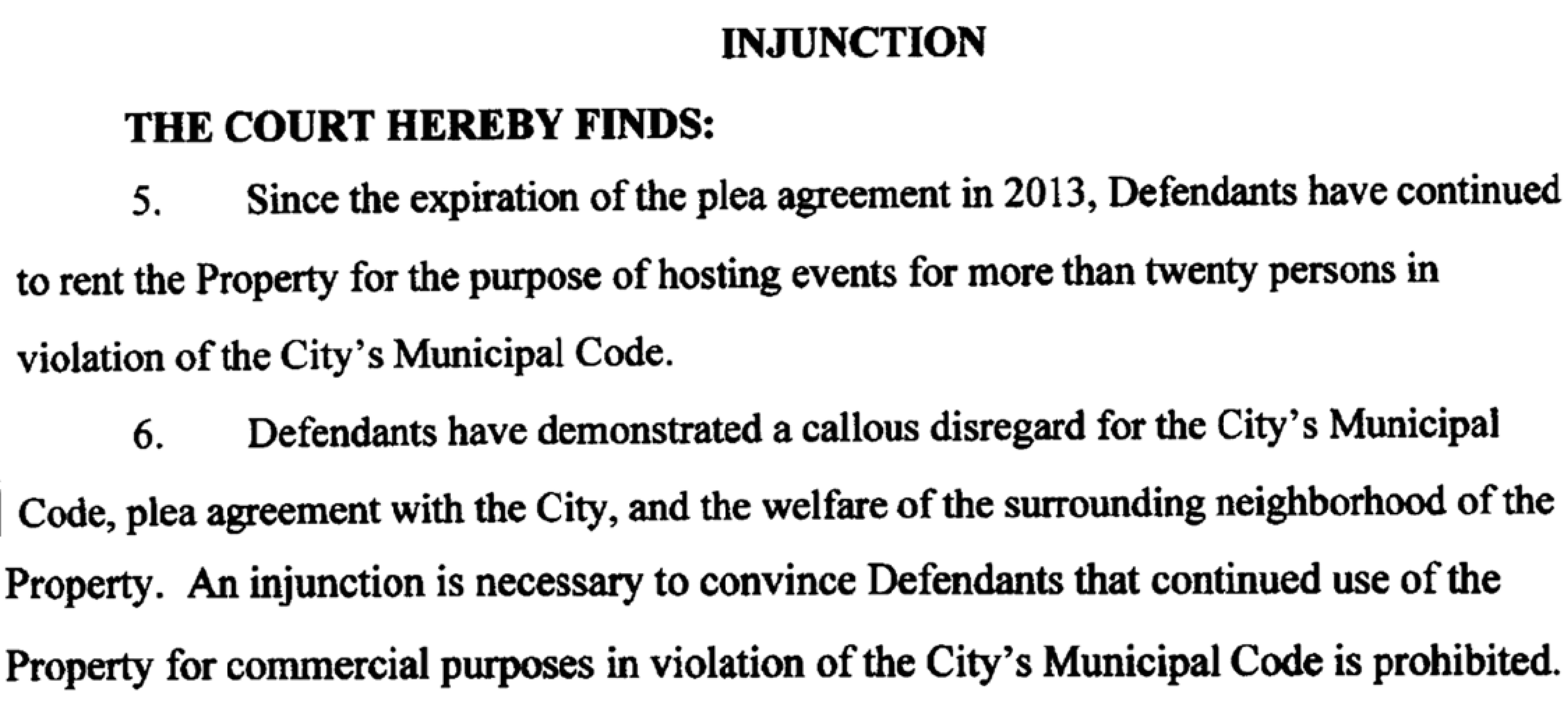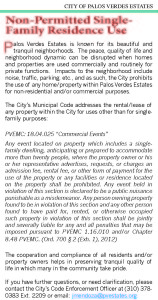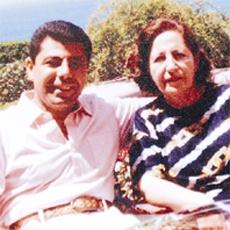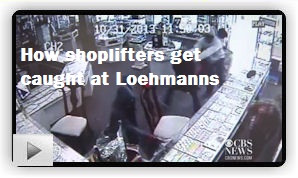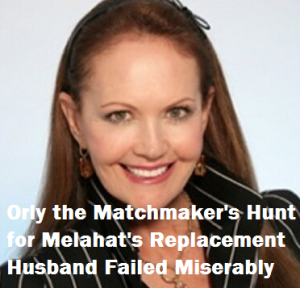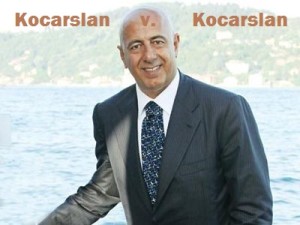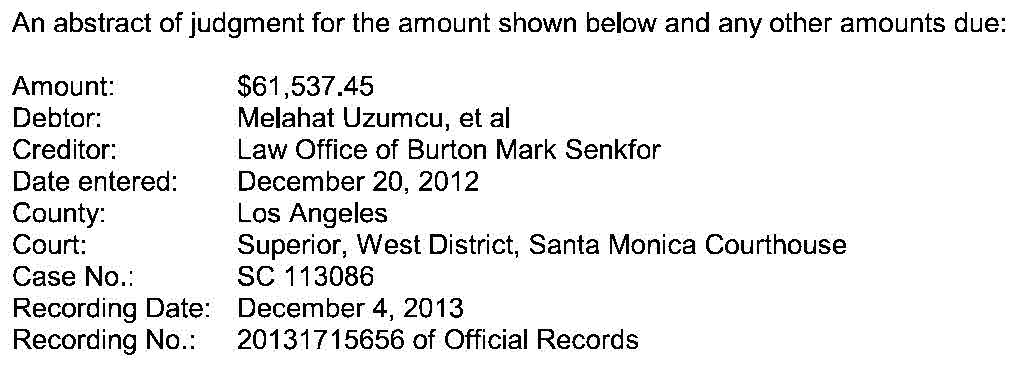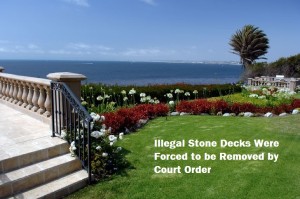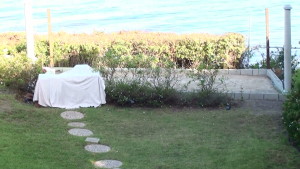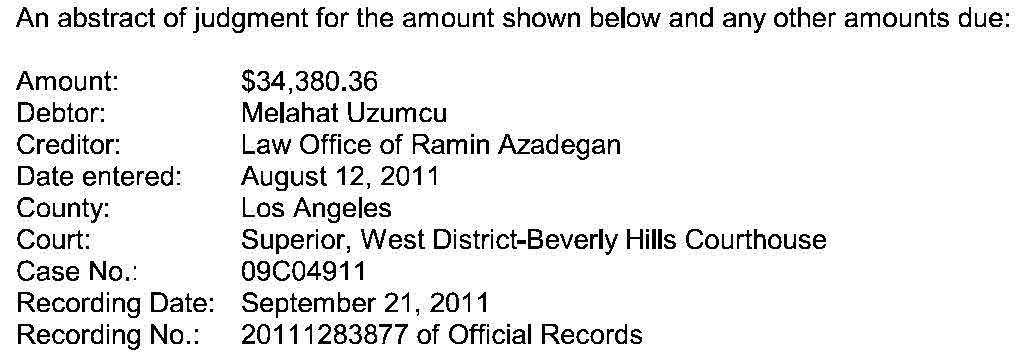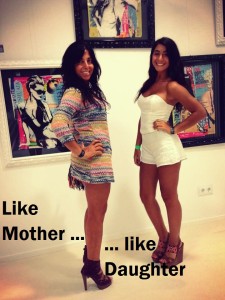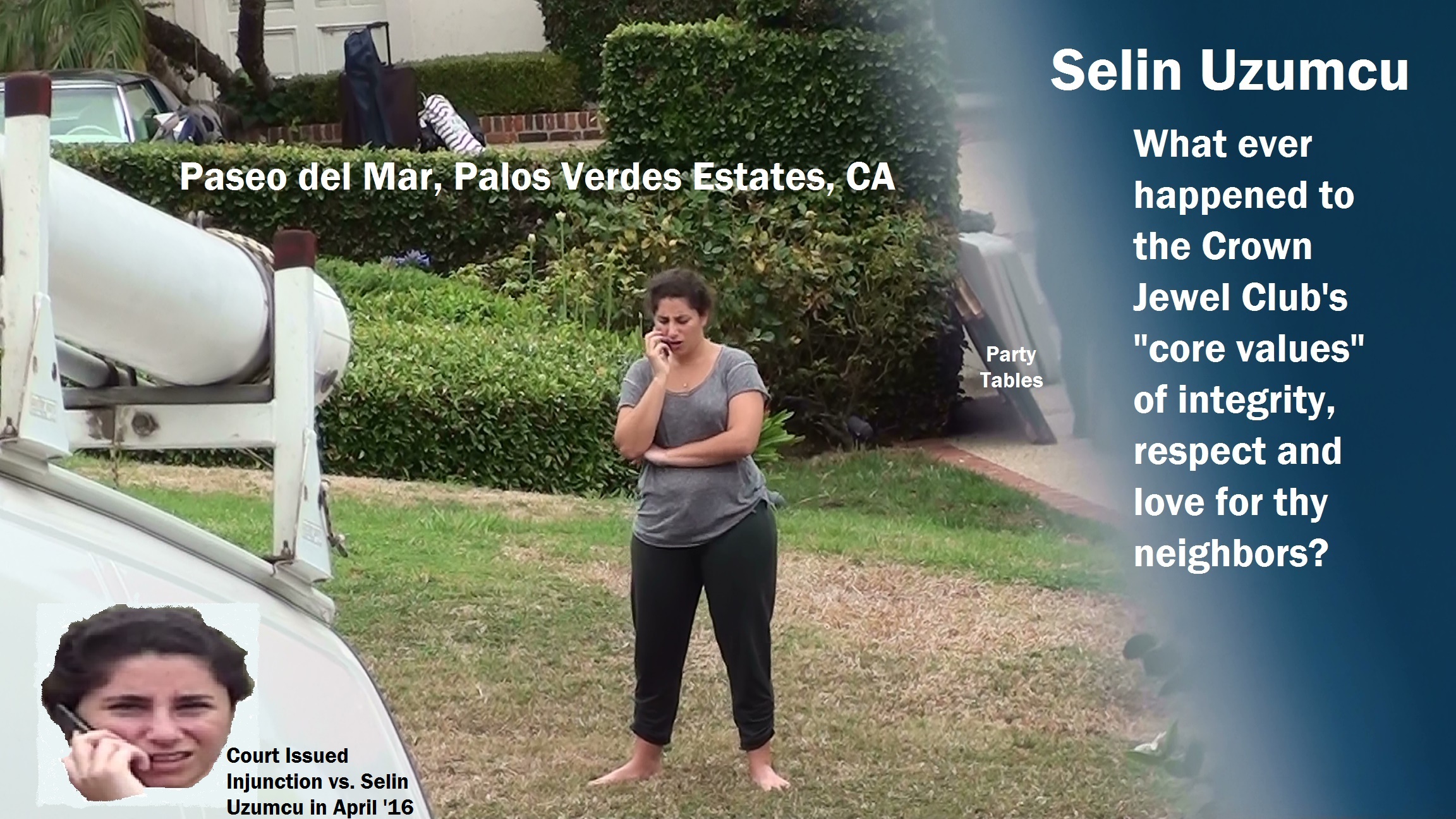Background Divorce Information
Source: Judge Zelon P.J. Perluss 12/17/2007 Appeals Decision, in California Court of Appeals, relating to Melahat Uzumcu’s failed 06/2005 appeal of judgment by California Superior Court Judges Avivva Bobb and Gary Klausner:
“Husband and wife initially met in Turkey in the year 1988. A fair and reasonable inference from the record on appeal would cast husband in the position of being quite wealthy and wife in the circumstances of having far less material wealth. Husband’’s father had been in the cable manufacturing business and died in the year 1990. Following the demise of his father, husband inherited an interest in the cable company which was sold to a French company in 1993. The amount realized from the sale was a matter of contention at the time of trial with wife testifying that husband told her the company had been sold for $40 million dollars, which husband denied, and indicated the company had been sold for $13 to $14 million dollars.
Laying aside the question as to the sale price of the company for the time being, this court focuses on the paramount question presented by this appeal, namely, wife’’s contention that substantial evidence was lacking for the trial court’’s determination awarding and confirming certain personal property to husband as his sole and separate property. Wife contends evidence to the contrary indicates that the husband had made gifts of certain personal property to her and the personal property under review by the trial court compelled a decision that the property was hers alone as gifts based on husband’’s donative intent, accompanied by delivery. For the most part, husband’’s contention on appeal is just [*2] the reverse of wife’’s contention, namely substantial evidence supports the award of certain items to him, but substantial evidence is lacking on those items awarded to wife as gifts by him to her.
Because donative intent is fraught with subjective considerations and quite frequently not documented in writing within an emotional relationship such as husband and wife, this court finds it advantageous, if not an outright necessity, to recite the extensive background and relevant life experiences of the parties, as presented by the record in this case or reasonable inferences therefrom.
In 1993, wife participated in the selection and purchase by husband of a residence in Rancho Palos Verdes, valued at $4.2 million dollars as of April 13, 1999. Commencing in 1994, wife participated in the selection and purchase by husband of various and sundry personal property items which form the vortex of the major contentions of the parties on appeal. The items referred to are generally described as jewelry, paintings, furniture, antiques and “”objects d’’art”” being so labeled by wife in her appellant’’s opening brief. The general procedures used by husband and wife to locate and acquire these personal properties involved looking at auction catalogues, attending auctions, visiting art stores, galleries, and dealerships. At wife’’s “”behest””, as stated in her opening brief, husband would then purchase expensive women’’s jewelry and artwork.
According to wife, from 1993-1999, she resided with husband in the residence in Palos Verdes, as well as in luxurious homes in exclusive neighborhoods in Istanbul, Turkey, which wife maintains were filled with expensive artwork, furniture, and antiques purchased from art and antique galleries, dealerships, jewelry brokers, and auctions that husband and wife attended together while traveling between their homes and to New York and Europe. The homes had servants, including housekeepers, cooks, gardeners and nannies.
As further background information, husband and wife are from different religious groups. Wife is from the Alevi sect, but husband is Sunni. According to wife as stated in her appellant’’s opening brief, under Turkish tradition and custom an Alevi woman who married a Sunni would be marginalized from her family and would lose her family’’s financial protection. For this reason, wife was reluctant to marry husband.
Wife gives further insight into Turkish tradition and society by stating in her opening brief that there is a strong tradition of the groom giving pre-marital gifts of gold and jewelry to the bride herself, which is known as “”bride wealth,”” with the amount given increasing with the wealth of the groom. Wife maintains that “”bride wealth”” is a sign of status for the groom’’s family also because the bride is given wealth commensurate with the groom’’s social and economic standing.
In 1994, husband and wife were living together but not actually married. Wife became pregnant and their daughter, S., was born in August 1995. Marriage was then discussed as a more urgent topic. Wife asserts [*3] that husband told her that she already had more security than any other woman her age because of the jewelry and other items husband had given her, and that he had given her far more than her family could have ever afforded to give her. On December 22, 1995, husband and wife were married and a second daughter, A., was born in April 1997.
Numerous items of expensive jewelry were purchased by husband during the years from 1994 to 1998, prior to their separation in 1999, which wife contends were gifts to her by husband. Husband counters wife’’s claim by contending that the jewelry was his separate property and that the wife never even wore any of the jewelry.
Trial court findings on claims to personal property items.
As accurately summarized in wife’’s brief on appeal, the trial court found the following personal property items to be gifts to wife, giving description, date of acquisition and estimated value:
“”1. 7.14 carat diamond ring, purchased on September 14, 1994 for $288,400;
“”2. Pearl and diamond earclips and matching ring, purchased on October 17, 1994 for $12,650;
“”3. Black pearl and diamond earclips and matching ring, purchased on October 17, 1994 for $21,850;
“”4. Black pearl necklace, purchased on October 19, 2004 for $68,500;
“”5. Pearl necklace, purchased on October 19, 1994 for $32,200;
“”6. Sapphire and diamond ring, purchased on October 19, 1994 for $90,500;
“”7. 8.69 carat intense yellow diamond ring, purchased on December 6, 1994 for $147,000;
“”8. Sapphire bracelet, purchased on December 7, 1994 for $51,750;
“”9. Diamond bracelet, purchased on December 7, 1994 for $40,250;
“”10. Intense yellow diamond earrings, purchased in October 1995 for $70,000;
“”11. Piaget watch, purchased on November 2, 1995 for $6,900;
“”12. Antique emerald and diamond brooch, purchased on November 16, 1995 for 167,700 Swiss francs;
“”13. Ruby and diamond necklace, purchased on November 16, 1995 for 120,000 Swiss francs;
“”14. Emerald and diamond ring, purchased on November 16, 1995 for 220,000 Swiss francs;
“”15. Pearl necklace, purchased on November 16, 1995 for 170,000 Swiss francs;
“”16. Gold and diamond Van Cleef & Arpels jewelry suite, purchased on December 4, 1995 for $24,150;
“”17. Sapphire and diamond Harry Winston earclips, purchased on December 4, 1995 for $23,000;
“”18. Diamond ‘’wedding’’ ring, purchased after the marriage for approximately $5,000-$6,000; and
“”19. Diamond Van Cleef & Arpels bracelet, purchased on October 21, 1996 for $134,500.””
Again, as accurately summarized in wife’’s brief on appeal, the trial court found the following personal property items were not gifts to wife and constituted the property of husband as his sole and separate property and likewise gave a description, date of acquisition and estimated value:
“”1. Emerald ring, purchased October 24, 1995 for $101,500;
“”2. 17.5 carat diamond ring (Melahat’’s actual intended wedding ring), purchased on October 25, 1995 for $657,500;
“”3. Ruby and diamond LaCloche bracelet, purchased on November 16, 1995 for 132,000 Swiss francs;
“”4. Gold necklace, purchased on November 21, 1995 for $2,500;
“”5. Gold jewelry suite, purchased on November 21, 1995 for $5,500;
“”6. Diamond and emerald earclips, purchased on December [*4] 7, 1995 for 17,000 pounds sterling;
“”7. Antique emerald Cartier cufflinks (to be made into earrings to match an emerald ring purchased), purchased on December 4, 1995 for $63,000;
“”8. Emerald and diamond Van Cleef & Arpels ring, purchased on December 7, 1995 for 17,000 pounds sterling;
“”9. Sapphire and diamond ring, purchased on December 7, 1995 for 33,000 pounds sterling;
“”10. Diamond and ruby choker [and earrings], purchased on November 20, 1996 for 66,700 Swiss francs;
“”11. Diamond necklace, purchased on February 18, 1998 for 16,000 Swiss francs;
“”12. Antique emerald and diamond necklace, purchased on February 18, 1998 for 75,000 Swiss francs; and
“”13. 10 carat sapphire stone, purchased on February 18, 1998 for $100,000.””
Other personal property items in contention.
Wife claims that numerous paintings were also purchased by husband during this time period. Three of the paintings were claimed by wife to be gifts to her. Wife contends that one of the three was sold in an effort to get husband to pay child support obligations which wife claims husband never did. Two of the paintings described as “”A View of Constantinople/Istanbul and the Bosphourus”” by Ivan Aivozovsky and “”In the Harem”” by Rudolf Ernst were awarded to husband. Wife contends the trial court erroneously based its ruling on lack of donative intent and delivery inasmuch as the evidence showed the paintings were on display in the residence and the fact that the display was in the “”common”” areas should not serve to nullify these items as gifts to her.
Contentions on appeal.
Wife’’s contention on appeal is summarized as one which attacks the findings of the trial court awarding personal property to husband which she claims were gifts to her. Wife maintains the trial court lacked a legal basis to make such findings as demonstrated by the colloquy between the court and counsel during trial in which the court sought “”corroborating evidence from wife to establish the gifts of jewelry to her.”” She states in her opening brief “”That the trial court repeatedly [and] erroneously found that there was insufficient evidence of delivery of particular items of jewelry to [wife], when there was sufficient evidence of such delivery but it was not independently corroborated, and the rule with respect to delivery of gifts is not strictly applied to gifts within a family (particularly as between husband and wife).”” To accentuate wife’’s claim of error by the trial court in requiring corroborative testimony, wife sets forth in her brief on appeal an excerpt from the record which she describes as “”just a few of the many excerpts”” as follows:
“”‘’THE COURT: Obviously, you can tell what I am looking for which is ––
“”‘'[Husband’’s Counsel]: Third party corroboration compared to the list and compared to anything else.
“”‘’THE COURT: Which is evidence before the Court that would fulfill the elements to meet your burden of proof other than by your witness’’ –– by your client’’s testimony.
“”‘'[Wife’’s Counsel]: I understand that’’s the Court inquiry and will endeavor to do that but I would hope that the Court recognizes although it does have a dilemma, that my [*5] client’’s testimony alone is sufficient to meet the burden if the Court finds it to be credible.
“”‘’THE COURT: I understand the law in that respect.’’””
“”‘’THE COURT: Can you tell me as to which of these items there is testimony about it –– can in your client’’s position other than from possession –– other than testimony –– other than your client’’s testimony about these items being in her possession?
“”‘'[Wife’’s Counsel]: There is testimony –– well, I can pull it out and detail it for you.
“”‘’THE COURT: Well, you could just refer to it, but it would be of assistance –– we had the advantage with respect to the Palos Verdes home of having, in my view, an independent witness. And I am looking for –– I don’’t know how independent the other witnesses are, but to the extent there are at least other witnesses, there are some items as to which we have testimony from other witnesses and some items as to which we have no testimony from other witnesses.’’””
“”‘'[Wife’’s Counsel]: Your Honor, following up on the question of the Court, I would point out that although many of the pieces have been particularly described as having been in the possession of Mrs. Uzumcu by the various witnesses, not all of them have been covered. But I urge the Court that the testimony of Mr. Uzumcu was that none of these things with the exception of a pair of earrings were ever in her possession. And I have now given to the Court 14 or 15 pieces that were identified as being in her possession or a photograph of her wearing those things and there is testimony that there was other jewelry. [¶¶] . . . So what we are probably talking about is well in excess of the majority of these pieces have been seen in the possession of Mrs. Uzumcu by independent witnesses who I think a fair assessment of their independence is that these people were friends of both parties. [¶¶] And independence –– they absolutely contradict the vehement denial by Mr. Uzumcu that this jewelry was ever in the possession of Mrs. Uzumcu. And I hope that her inability to produce a photograph because Mr. Uzumcu has got all the photographs of her wearing some of these other pieces or to produce that particular witness from Istanbul or elsewhere that saw her wearing one of these pieces is not going to significantly impact the Court’’s decision as to whether or not these items were a gift to her. . . . [¶¶] So I would certainly hope the Court wouldn’’t penalize Mrs. Uzumcu because she is unable to bring forward a witness seeing her wear every single piece of this jewelry, because she can’’t remember what all of her friends have seen. But I don’’t think it is fair to her to say, “”if no one saw you wear, it doesn’’t belong to you,”” given that Mr. Uzumcu’’s testimony about the reason for the purchase is so inherently unbelievable.’’””
“”‘’THE COURT: That’’s what I was asking counsel to try to see how to put List Three together with what there is independent corroboration of.’’””
“”‘’THE COURT: . . . Excuse me. I would like to hear specifically on 514(2), is there are (sic) corroborating testimony? . . . .
“”‘'[Wife’’s Counsel]: When you say “”corroborating”” you mean other than Mrs. Uzumcu?
“”‘’THE COURT: Correct.’’””
Husband’’s response to wife’’s contention is essentially the reverse mirror [*6] image of wife’’s contention in that he maintains substantial evidence supports the findings of the trial court inasmuch as those findings award personal property to him as his sole and separate property, but attacks the findings of the trial court as lacking substantial evidence where items of personal property were awarded to wife as her sole and separate property as constituting gifts by him to her, in the face of lack of donative intent and/or delivery. In addition to the issues above mentioned, husband raises other issues in his cross-appeal. We do not reach the claims of Husband in his cross-appeal in view of the untimely filing of the cross-appeal thereby depriving this court of jurisdiction to hear Husband’’s claims, as more particularly discussed hereafter.2“
NOTE FROM SITE TO DESIRE MELI KOCARSLAN: All of the information on this site was obtained from public sources (e.g., County and State court and other records) or provided voluntarily to sources of the site by parties mentioned herein (e.g., Natasha Cleveland or other renters of your illegal event venue). Should you have written evidence that any false statement exists on this site, you are encouraged strongly to contact the site immediately. You are encouraged to provide a signed, notarized affidavit exclusively disputing accusations made against you or related parties. Such affidavit then may be made available on this site, allowing the public to consider “your side” of the story.
This web page and related posts and commentary represent both publicly available and direct witness/participant facts and personal opinions, as protected by the First Amendment to the U.S. Constitution. Comments made by third parties, in the Comment Section below or elsewhere, represent commentators’ own representations of facts and own opinions.
